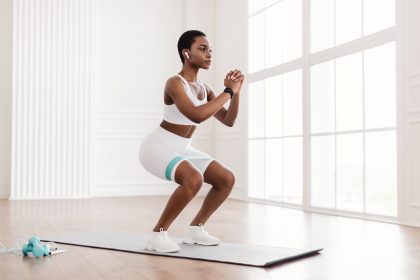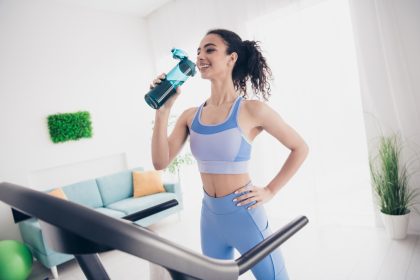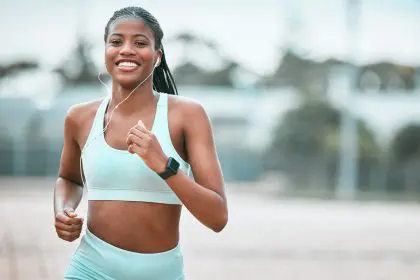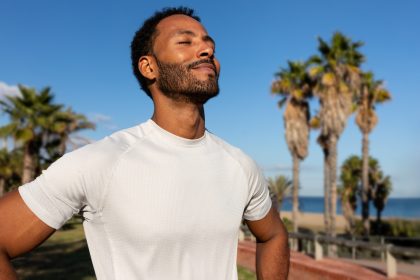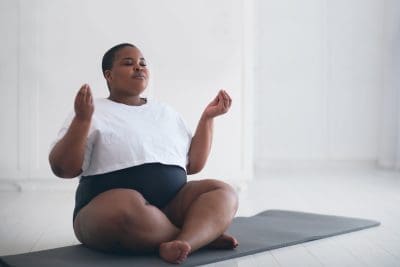Expert reveals transformative power of rowing workouts for total body transformation

The revolution of rowing fitness
In the ever-evolving landscape of fitness trends, rowing has emerged as a powerhouse workout, redefining how we approach total body conditioning. This comprehensive exercise modality has captured the attention of fitness enthusiasts and professionals alike, offering an unparalleled combination of strength training and cardiovascular benefits. Rowing is unique in that it activates an impressive 86% of the body’s muscles during each stroke, providing a full-body workout that can help transform both strength and stamina. As fitness routines continue to diversify, rowing stands out as an effective and time-efficient exercise for anyone looking to build strength, burn calories, and improve overall cardiovascular health.
Breaking down the science of rowing
The effectiveness of rowing lies in its unique biomechanical demands. Unlike traditional cardio exercises, which primarily target the lower body, rowing engages multiple muscle groups simultaneously, creating a synergistic effect that maximizes workout efficiency. Each stroke requires effort from the legs, core, and upper body, making it a truly full-body workout. This comprehensive engagement not only accelerates calorie burn but also promotes balanced muscle development throughout the body.
Rowing is particularly effective for cardiovascular conditioning, as it elevates the heart rate while maintaining a steady rhythm, leading to improved endurance over time. At the same time, it strengthens and tones muscles across the entire body, from the legs and glutes to the back, shoulders, and arms. This dual action makes rowing a powerful exercise for those seeking to improve both strength and cardiovascular health without sacrificing one for the other.
The progressive timeline of transformation
The rowing journey follows a distinct pattern of progression that can help users track their transformation from week to week. As with any fitness regimen, consistency is key, and understanding the stages of progress can keep motivation high as individuals move through different phases of their rowing journey.
Initial phase (Weeks 1-4)
In the first four weeks of rowing, individuals typically experience fundamental adaptations in cardiovascular capacity and muscle recruitment patterns. Early on, the body is adjusting to the mechanics of rowing, improving coordination and form. Beginners may initially feel the intensity of the workout, as their body starts to engage new muscle groups and increase overall strength. At this stage, improvements in endurance may be subtle, but there will be noticeable gains in stamina and efficiency as the body adapts.
Development phase (Weeks 5-8)
As individuals progress into weeks 5 through 8, enhanced muscle definition becomes more apparent, and endurance improvements begin to show more clearly. This phase marks a shift from basic adaptation to noticeable physical change. Muscles begin to become more defined, especially in the legs, arms, and core, while cardiovascular endurance improves with sustained effort. This is the stage where rowing starts to feel more fluid and natural, as strength and stamina continue to build.
Advanced phase (Weeks 9-12)
The final phase, from weeks 9 to 12, brings the most significant transformations. Body composition changes become noticeable, with a reduction in body fat and a marked increase in muscle mass. Performance improvements at this stage are substantial—rowing times improve, endurance peaks, and the body is functioning at a higher level. This is where individuals can expect to see their most impressive results, both in terms of strength and overall fitness. At this point, rowing is not only enhancing muscle development but also significantly improving athletic performance.
Optimizing caloric expenditure
Rowing’s impressive calorie-burning potential sets it apart from other forms of exercise. Due to the combination of strength training and cardiovascular benefits, rowing can burn a significant number of calories in a relatively short period of time.
Moderate sessions: 200-300 calories per 30-minute workout
For a typical moderate-intensity session, rowing can burn between 200 and 300 calories in just 30 minutes. This makes rowing an efficient option for those looking to burn calories without spending hours at the gym.
High-intensity sessions: 250-450 calories per 30-minute workout
For those who incorporate higher-intensity rowing intervals or sprints, the calorie burn can increase significantly, with 250 to 450 calories burned per 30-minute session. High-intensity interval training (HIIT) rowing can supercharge the calorie-burning process, especially when combined with short bursts of intense effort and recovery periods.
Extended sessions: Potential for even greater caloric expenditure with proper intensity management
Rowing for longer periods, particularly at moderate to high intensities, allows for even greater caloric expenditure. For those who have the stamina to maintain higher intensity for longer durations, this can significantly contribute to weight loss and fat reduction.
Strategic workout variations
To maximize it’s results, it is important to incorporate diverse training approaches. These workout variations help to target different fitness goals, whether they are focused on cardiovascular health, muscle development, or overall endurance. Here are some ways to vary your rowing routine:
Endurance-focused sessions for sustained cardiovascular improvement
Longer sessions at a moderate pace can help improve cardiovascular endurance. The key is to maintain a steady pace, allowing your body to adjust to sustained physical effort and increase cardiovascular capacity over time.
HIIT protocols for metabolic enhancement
High-intensity interval training (HIIT) sessions involve alternating between short bursts of intense rowing and periods of active recovery. This method is ideal for maximizing calorie burn and improving cardiovascular fitness while keeping the workout interesting and challenging.
Strength-emphasis workouts for muscle development
Focusing on strength-building workouts can help tone muscles and increase muscle mass. This involves incorporating more intense, slow-paced intervals with higher resistance to target muscle development in the legs, arms, and core.
Recovery rows for active regeneration
On recovery days, going at a lighter intensity can help promote active regeneration. This less intense provides a way to engage the muscles and increase circulation, aiding in the recovery process from more strenuous workouts.
Measuring progress and success
Implementing a systematic approach to tracking progress is essential for staying motivated and ensuring steady advancement toward fitness goals. Regular assessments of performance metrics—such as rowing speed, distance, and the number of strokes per minute—can provide tangible evidence of rowing’s transformative effects. Monitoring changes in body composition, such as fat loss and muscle gain, is also a powerful way to measure success.
By measuring progress consistently, individuals can track their journey toward better health and fitness, celebrating milestones along the way and staying on course to achieve their ultimate goals.

